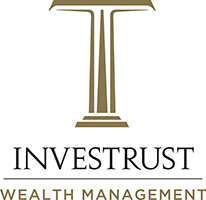After more than five years of unprecedented support for the economy, the Federal Reserve Board has begun to reduce its purchases of bonds. And though the Fed has said interest rates may stay low even after unemployment has fallen to 6.5%, higher rates increasingly seem to be a question of timing. Both of those actions can affect your portfolio.
Bond purchases: the tale of the taper
In the wake of the 2008 credit crisis, the Fed’s purchases of Treasury and mortgage-backed bonds helped keep the bond market afloat, supplying demand for debt instruments when other buyers were hesitant. Fewer purchases by one of the bond markets’ biggest customers in recent years could mean lower total overall demand for debt instruments. Since reduced demand for anything often leads to lower prices, that could hurt the value of your bond holdings.
On the other hand, retiring baby boomers will need to start generating more income from their portfolios, and they’re unlikely to abandon income-producing investments completely. Those boomers could help replace some of the lost demand from the Fed. Also, the Fed’s planned retreat from the bond-buying business has roiled overseas markets in recent months; when that kind of uncertainty hits, global investors often seek refuge in U.S. debt.
Rising interest rates
When interest rates begin to rise, investors will face falling bond prices, and longer-term bonds typically feel the impact the most. Bond buyers become reluctant to tie up their money for longer periods because they foresee higher yields in the future. The later a bond’s maturity date, the greater the risk that its yield will eventually be superseded by that of newer bonds. As demand drops and yields increase to attract purchasers, prices fall.
There are various ways to manage that impact. You can hold individual bonds to maturity; you would suffer no loss of principal unless the borrower defaults. Bond investments also can be laddered. This involves buying a portfolio of bonds with varying maturities; for example, a five-bond portfolio might be structured so that one of the five matures each year for the next five years. As each bond matures, it can be reinvested in an instrument that carries a higher yield.
If you own a bond fund, you can check the average maturity of the fund’s holdings, or the fund’s average duration, which takes into account the value of interest payments and will generally be shorter than the average maturity. The longer a fund’s duration, the more sensitive it may be to interest rate changes. Note: All investing involves risk, including the loss of principal, and your shares may be worth more or less than you paid for them when you sell. Before investing in a mutual fund, carefully consider its investment objective, risks, fees, and expenses, which are outlined in the prospectus available from the fund. Read it carefully before investing.
For those who’ve been diligent about saving, or who have kept a substantial portion of their investments in cash equivalents such as savings accounts or certificates of deposit, higher interest rates could be a boon, as rising rates would increase their potential income. The downside, of course, is that if higher rates are accompanied by inflation, such cash alternatives might not keep pace with rising prices.
Balancing competing risks
Bonds may be affected most directly by Fed action, but equities aren’t necessarily immune to the impact of rate increases. Companies that didn’t take advantage of low rates by issuing bonds may see their borrowing costs increase, and even companies that squirreled away cash could be hit when they return to the bond markets. Also, if interest rates become competitive with the return on stocks, that could reduce demand for equities. On the other hand, declining bond values could send many investors into equities that offer both growth potential and a healthy dividend.
Figuring out how future Fed decisions may affect your portfolio and how to anticipate and respond to them isn’t an easy challenge. Don’t hesitate to get expert help.
Prepared by Broadridge Investor Communication Solutions, Inc. Copyright 2014
